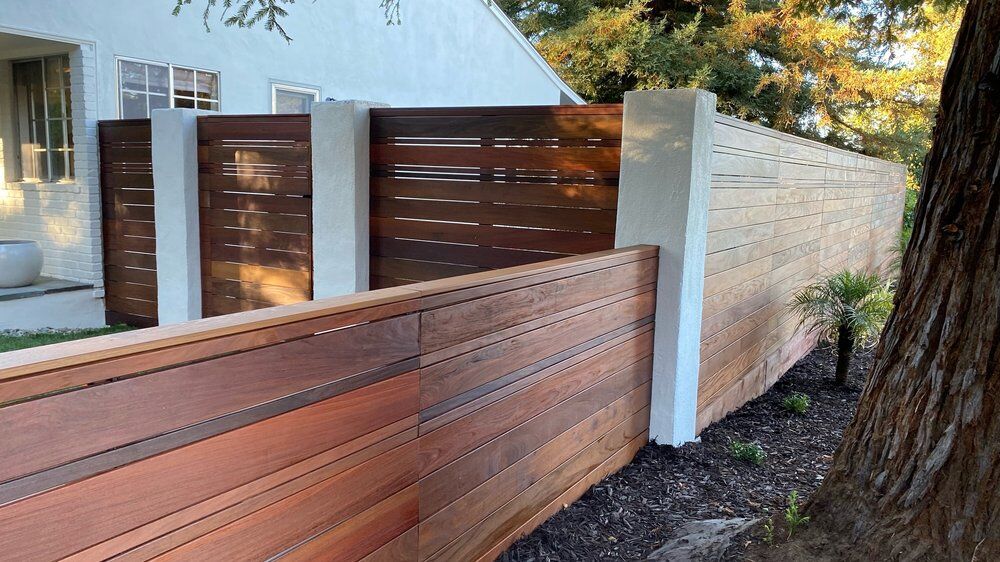All Categories
Featured

Selecting the appropriate kind of fencing for your home is a substantial decision that can impact both the aesthetics and functionality of your space. Whether you're searching for privacy, safety, or just a decorative feature, there are numerous variables to consider when selecting the optimal fencing. Below are some vital considerations to aid direct your decision-making procedure.
- Establish the Purpose of the Fencing. The very first step in choosing the appropriate kind of fencing is to clarify its purpose. Various fences serve different features, and understanding your specific needs will help limit your alternatives. Take into consideration the adhering to:
Privacy: If you're seeking privacy, a high and solid fencing such as timber or vinyl will certainly avoid prying eyes from seeing into your yard. Safety: For safety and security objectives, a strong, high fence made of aluminum or steel can deter burglars and supply comfort. Visual Appeal: A decorative fencing made from functioned iron, aluminum, or picket-style wood can include charm and aesthetic interest your home. Animal or Animal Control: If you need to include pet dogs or animals, a sturdy fence like chain link or timber may be necessary to stop them from getting away. 2. Think about the Material. Once you have actually established the fence's main purpose, it's time to select the material. Each type of product features its own collection of challenges and advantages. Right here are some typical products to think about:
Wood: Wood fencings are versatile and adjustable, supplying personal privacy and a classic appearance. They're ideal for traditional homes or country homes but need routine upkeep to stop bug, bending, or rot invasion. Plastic: Plastic fencings are low-maintenance, durable, and offered in a variety of designs. They won't split, warp, or fade, making them a great choice for those that desire a durable, hassle-free fence. Vinyl can be much more pricey ahead of time than wood. Light weight aluminum: Light weight aluminum fencings offer a sleek, modern-day appearance and are sturdy, rust-resistant, and require minimal maintenance. They usually don't offer as much personal privacy as wood or vinyl, as the slats are often spaced apart. Chain Web link: Chain link fencings are frequently used for safety or to consist of pet dogs. They are cost effective and sturdy, but they do not offer much personal privacy or aesthetic allure unless you include slats or privacy displays. 3. Factor in the Climate and Maintenance Needs. Your area's climate can significantly influence the life-span and maintenance demands of your fencing. If you reside in an area with high moisture or regular rain, materials like timber may require extra treatment to avoid rot or mold growth. On the other hand, vinyl and aluminum fencings are resistant to the components and call for a lot less maintenance.
Additionally, take into consideration the amount of time and effort you're willing to commit to fence maintenance. Timber fences need regular discoloration or paint to preserve their look, while plastic and light weight aluminum call for much much less maintenance.
- Consider Durability and Life expectancy. Take into consideration for how long you want your fencing to last. , if you're looking for a fence that will certainly last for decades with little upkeep, vinyl and light weight aluminum are excellent choices.. While wood fencings can last 10-20 years with appropriate treatment, they might not stand up to the test of time as well as other products.
Additionally, consider your spending plan. Materials like wood and chain link have a tendency to be more cost effective upfront, while plastic and aluminum often tend to come with a higher first price yet supply long-term durability.
- Match the Fence to Your Residential Property Style. The kind of fence you choose should match the general look and feel of your residential property. An appropriate fence can boost your home's aesthetic appeal, while a badly picked fence can take away from it. For instance:
Typical Houses: A traditional wood picket fencing or a wrought iron fence functions well with older, more typical homes. Modern Houses: For a contemporary look, sleek materials like aluminum or plastic can enhance contemporary architecture. Country or Ranch Properties: A wooden or wire fence might be perfect for country homes or farms, where functionality is just as crucial as appearances. 6. Inspect Local Regulations and HOA Guidelines. Prior to making your final choice, check your local zoning guidelines and any kind of HOA (Homeowners Organization) standards to make sure that your desired fencing abide by elevation constraints, product demands, and various other local regulations. Some areas have certain rules regarding the look of fences, particularly in domestic neighborhoods.

Verdict. Picking the right fencing for your home calls for mindful consideration of your demands, budget plan, and the style of your home. Whether you're focusing on privacy, safety and security, or aesthetic appeal, there's a fencing material and layout that will suit your demands. By thinking about the aspects detailed over, you can make an educated choice and pick a fencing that will improve the functionality and appeal of your home for many years to come.
Latest Posts
Find Montclare Auto Repair’s Most Popular Auto Repairs and Why Drivers Choose Them
Published en
1 min read
Shield Your Home with High Quality Residential Roof
Published en
1 min read
Uncover Budget-Friendly Auto Repairs with Montclare’s Exclusive Service Specials
Published en
1 min read
More
Latest Posts
Find Montclare Auto Repair’s Most Popular Auto Repairs and Why Drivers Choose Them
Published May 23, 25
1 min read
Shield Your Home with High Quality Residential Roof
Published May 22, 25
1 min read
Uncover Budget-Friendly Auto Repairs with Montclare’s Exclusive Service Specials
Published May 22, 25
1 min read